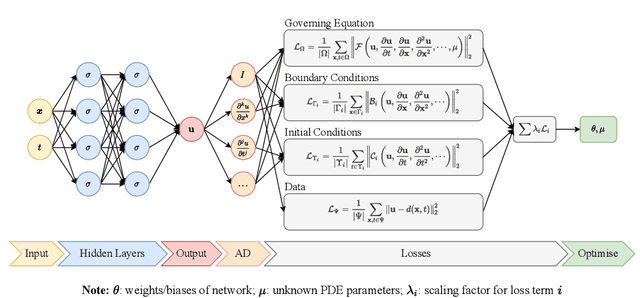Rafael Bischof
Counterfactual Image Generation for adversarially robust and interpretable Classifiers
Oct 01, 2023Abstract:Neural Image Classifiers are effective but inherently hard to interpret and susceptible to adversarial attacks. Solutions to both problems exist, among others, in the form of counterfactual examples generation to enhance explainability or adversarially augment training datasets for improved robustness. However, existing methods exclusively address only one of the issues. We propose a unified framework leveraging image-to-image translation Generative Adversarial Networks (GANs) to produce counterfactual samples that highlight salient regions for interpretability and act as adversarial samples to augment the dataset for more robustness. This is achieved by combining the classifier and discriminator into a single model that attributes real images to their respective classes and flags generated images as "fake". We assess the method's effectiveness by evaluating (i) the produced explainability masks on a semantic segmentation task for concrete cracks and (ii) the model's resilience against the Projected Gradient Descent (PGD) attack on a fruit defects detection problem. Our produced saliency maps are highly descriptive, achieving competitive IoU values compared to classical segmentation models despite being trained exclusively on classification labels. Furthermore, the model exhibits improved robustness to adversarial attacks, and we show how the discriminator's "fakeness" value serves as an uncertainty measure of the predictions.
Design Space Exploration and Explanation via Conditional Variational Autoencoders in Meta-model-based Conceptual Design of Pedestrian Bridges
Nov 29, 2022Abstract:For conceptual design, engineers rely on conventional iterative (often manual) techniques. Emerging parametric models facilitate design space exploration based on quantifiable performance metrics, yet remain time-consuming and computationally expensive. Pure optimisation methods, however, ignore qualitative aspects (e.g. aesthetics or construction methods). This paper provides a performance-driven design exploration framework to augment the human designer through a Conditional Variational Autoencoder (CVAE), which serves as forward performance predictor for given design features as well as an inverse design feature predictor conditioned on a set of performance requests. The CVAE is trained on 18'000 synthetically generated instances of a pedestrian bridge in Switzerland. Sensitivity analysis is employed for explainability and informing designers about (i) relations of the model between features and/or performances and (ii) structural improvements under user-defined objectives. A case study proved our framework's potential to serve as a future co-pilot for conceptual design studies of pedestrian bridges and beyond.
Multi-Objective Loss Balancing for Physics-Informed Deep Learning
Oct 19, 2021



Abstract:Physics Informed Neural Networks (PINN) are algorithms from deep learning leveraging physical laws by including partial differential equations (PDE) together with a respective set of boundary and initial conditions (BC / IC) as penalty terms into their loss function. As the PDE, BC and IC loss function parts can significantly differ in magnitudes, due to their underlying physical units or stochasticity of initialisation, training of PINNs may suffer from severe convergence and efficiency problems, causing PINNs to stay beyond desirable approximation quality. In this work, we observe the significant role of correctly weighting the combination of multiple competitive loss functions for training PINNs effectively. To that end, we implement and evaluate different methods aiming at balancing the contributions of multiple terms of the PINNs loss function and their gradients. After review of three existing loss scaling approaches (Learning Rate Annealing, GradNorm as well as SoftAdapt), we propose a novel self-adaptive loss balancing of PINNs called ReLoBRaLo (Relative Loss Balancing with Random Lookback). Finally, the performance of ReLoBRaLo is compared and verified against these approaches by solving both forward as well as inverse problems on three benchmark PDEs for PINNs: Burgers' equation, Kirchhoff's plate bending equation and Helmholtz's equation. Our simulation studies show that ReLoBRaLo training is much faster and achieves higher accuracy than training PINNs with other balancing methods and hence is very effective and increases sustainability of PINNs algorithms. The adaptability of ReLoBRaLo illustrates robustness across different PDE problem settings. The proposed method can also be employed to the wider class of penalised optimisation problems, including PDE-constrained and Sobolev training apart from the studied PINNs examples.
 Add to Chrome
Add to Chrome Add to Firefox
Add to Firefox Add to Edge
Add to Edge